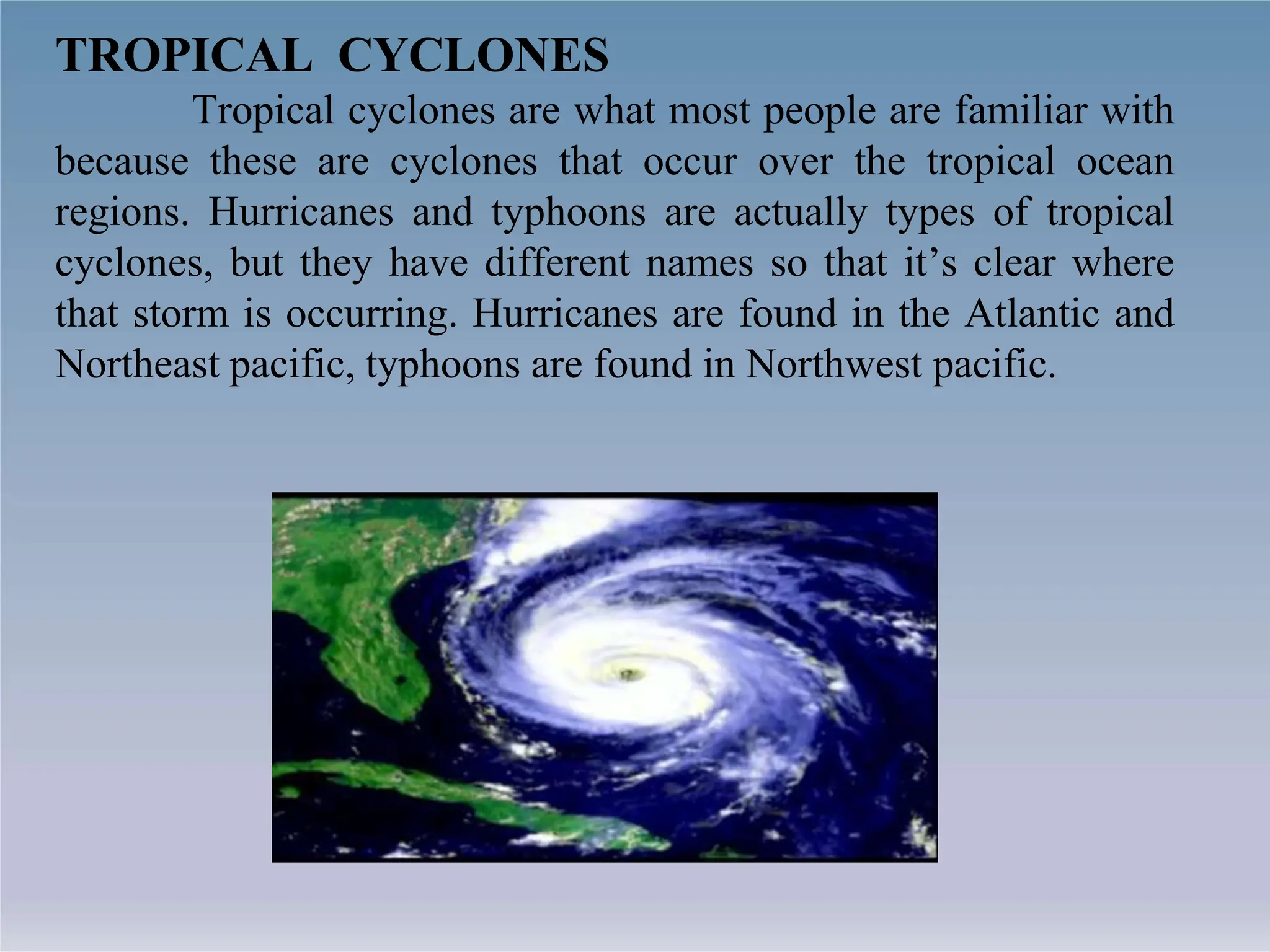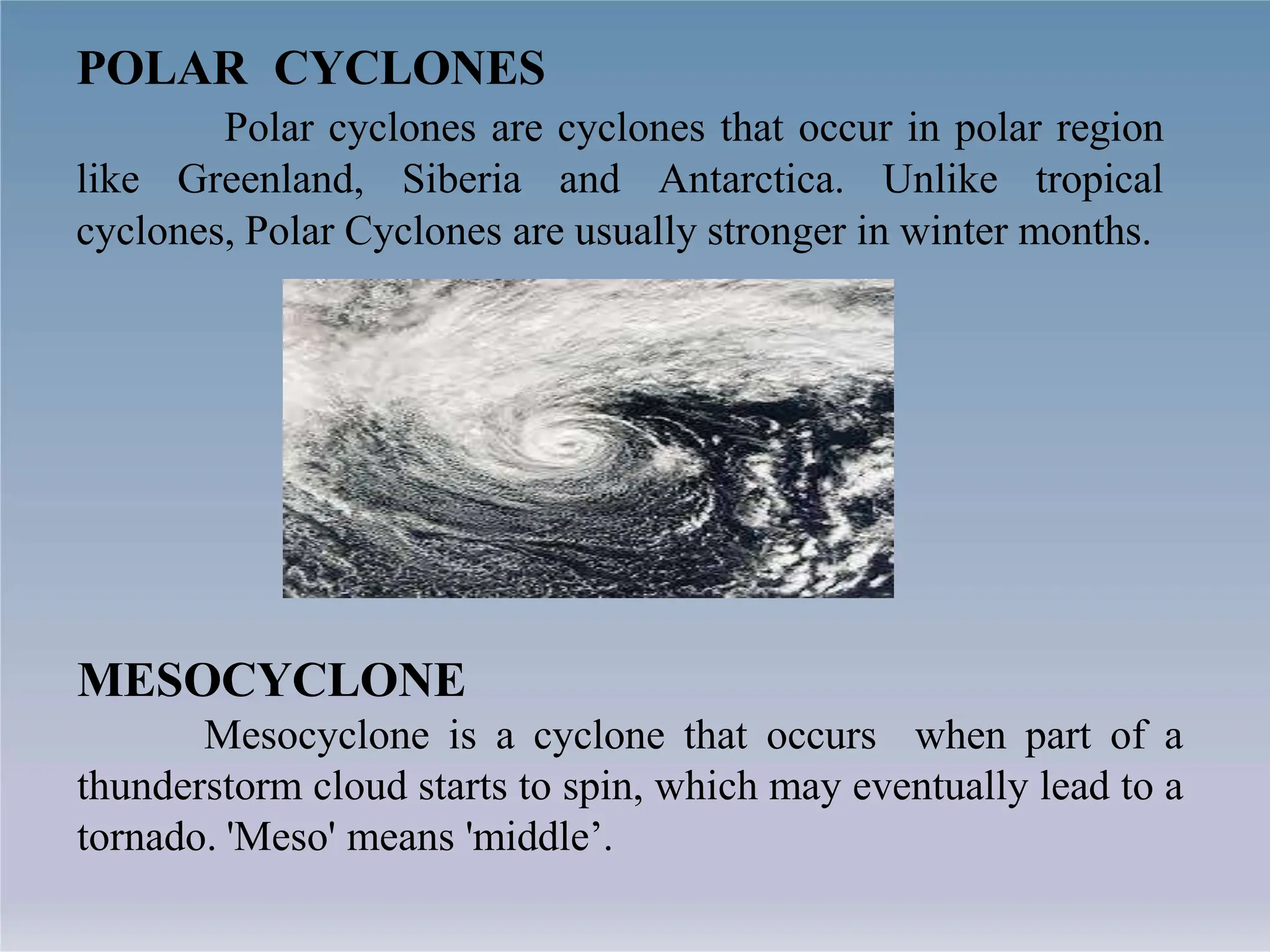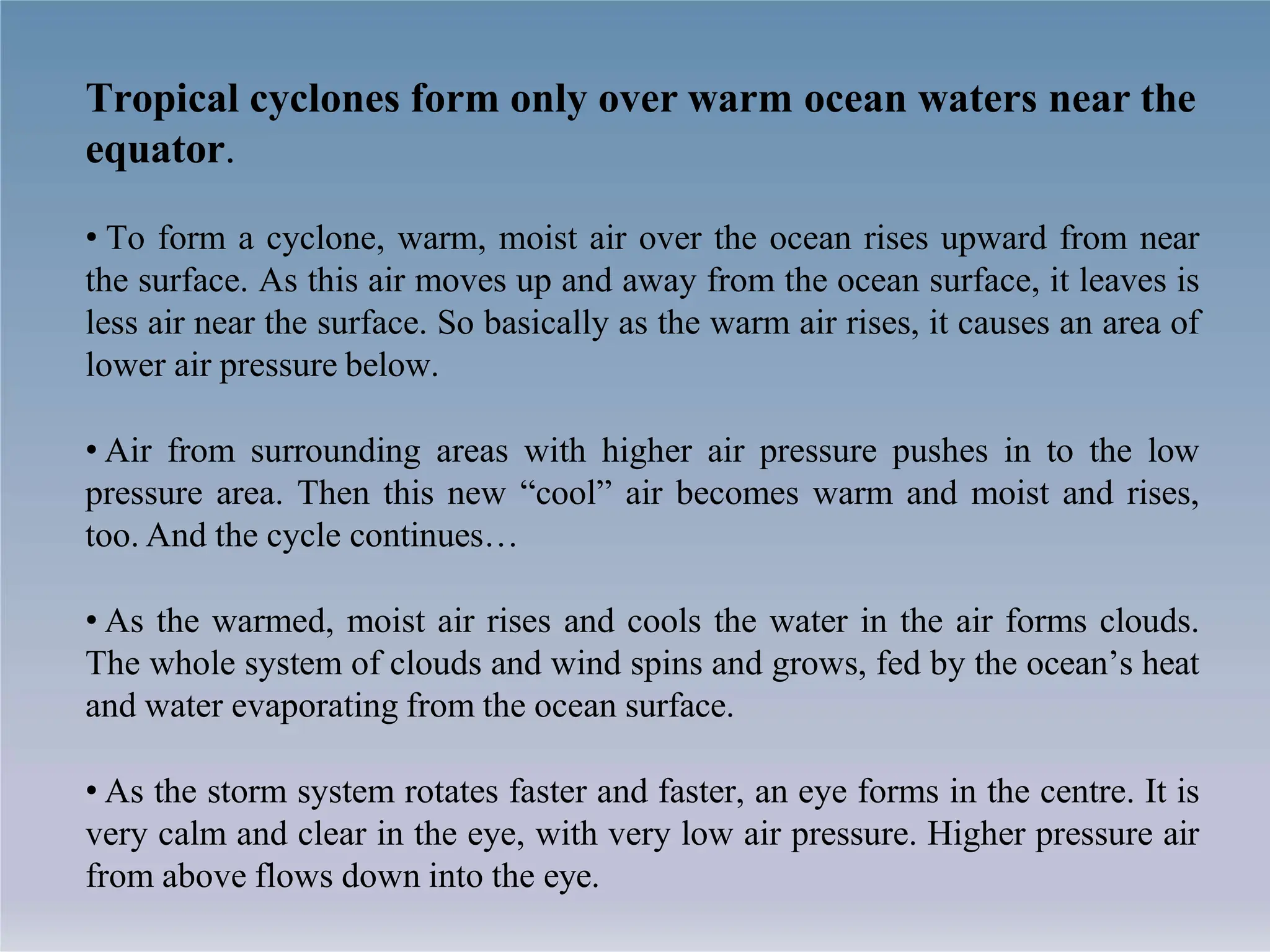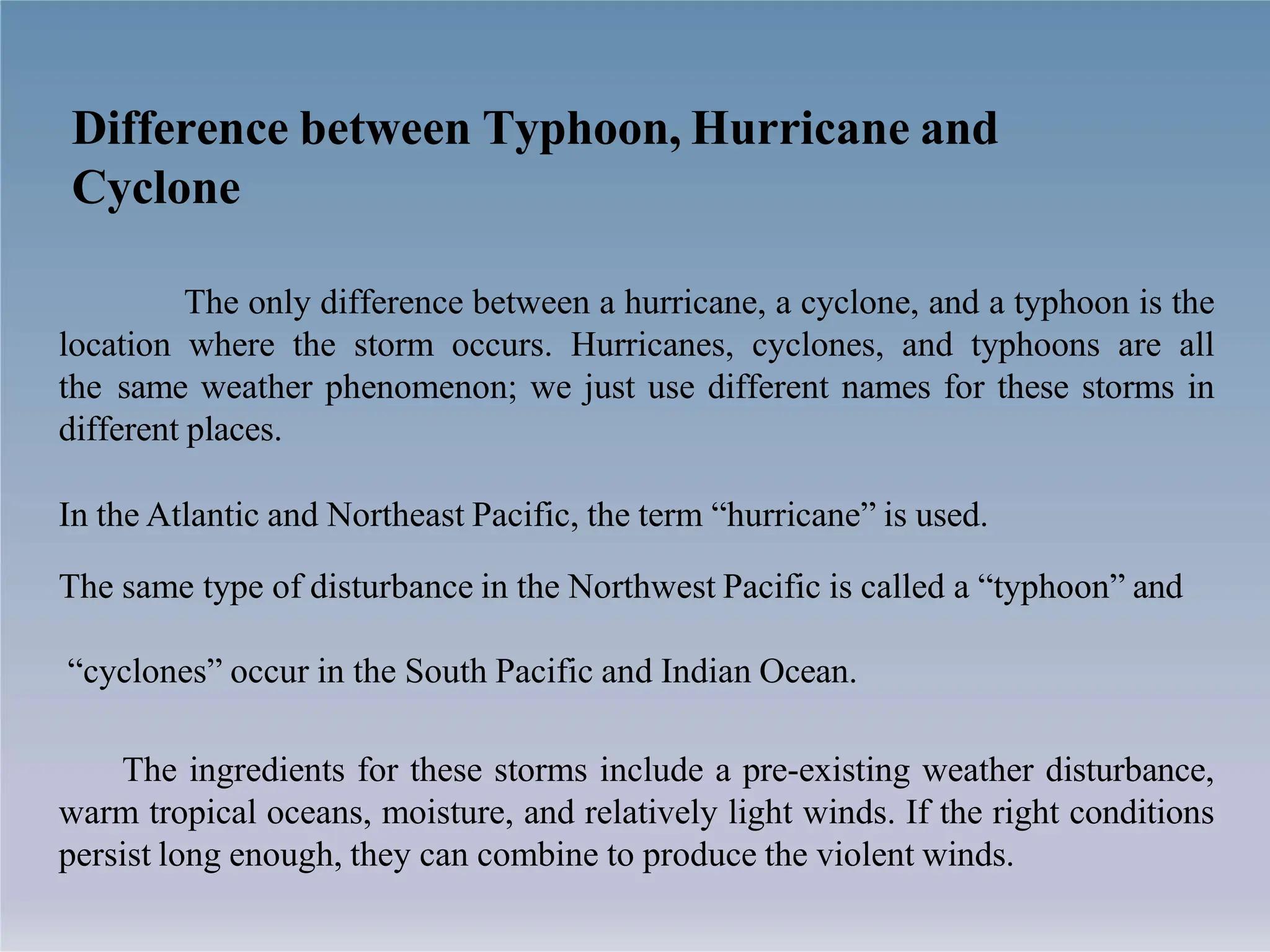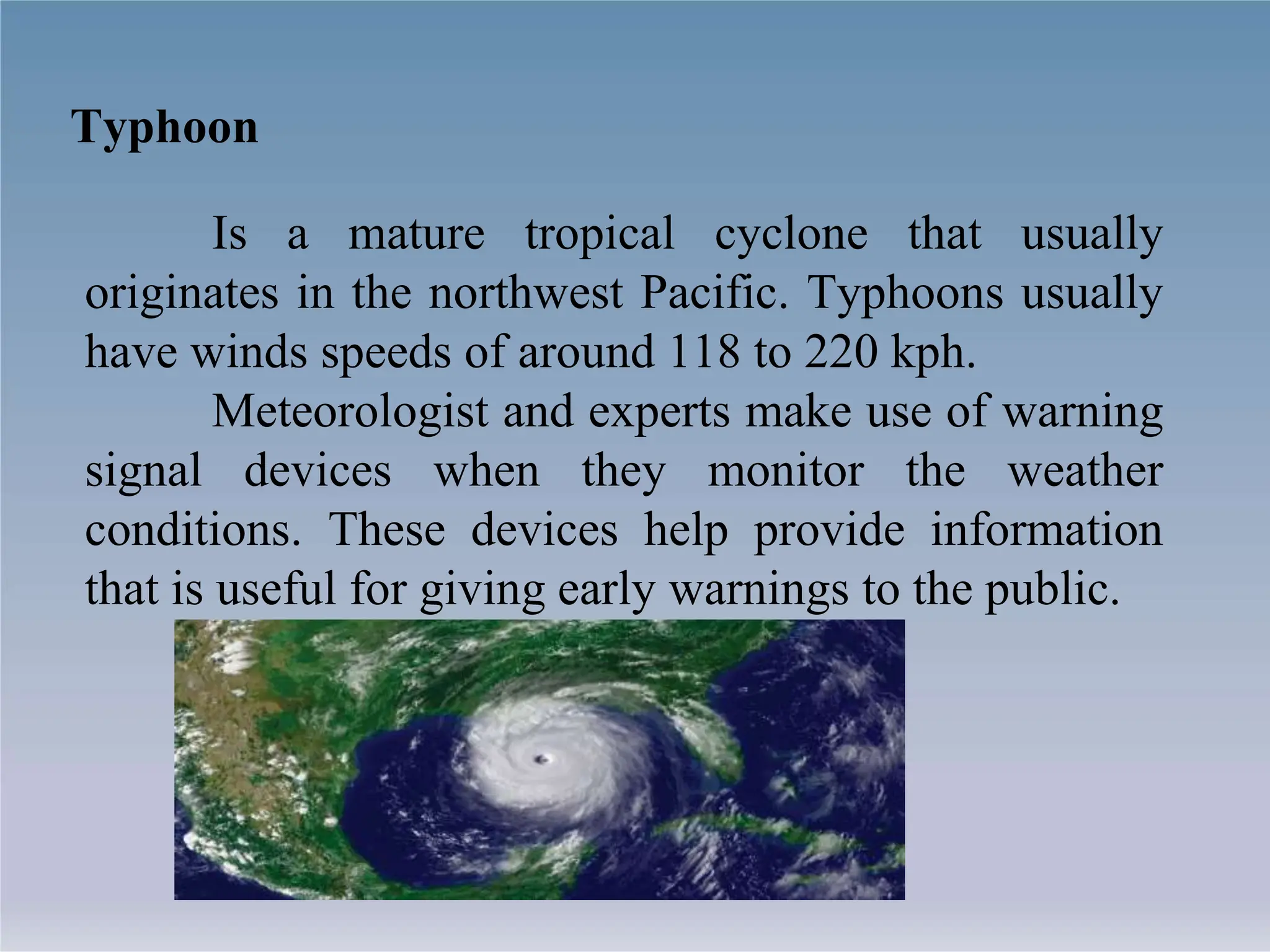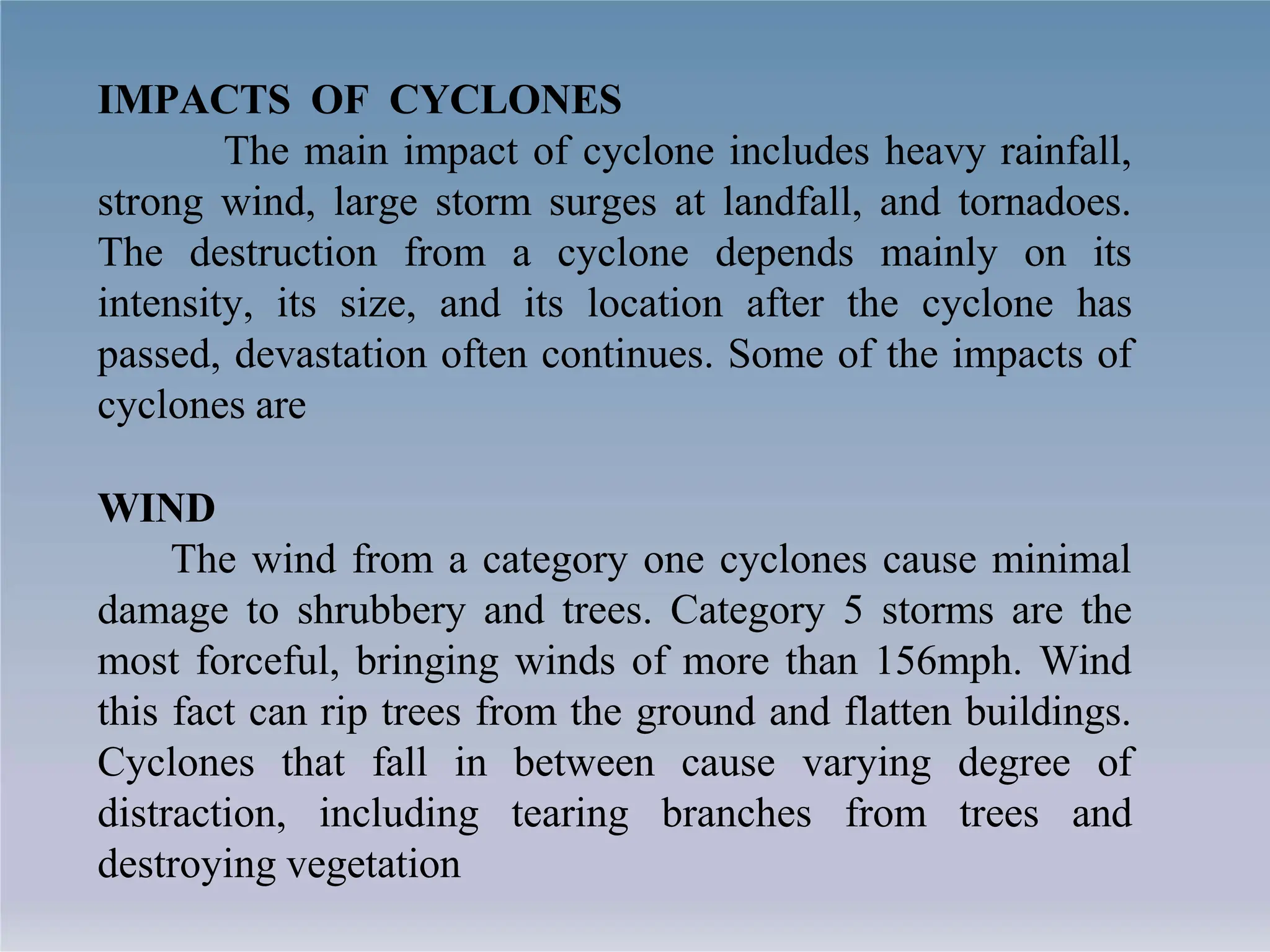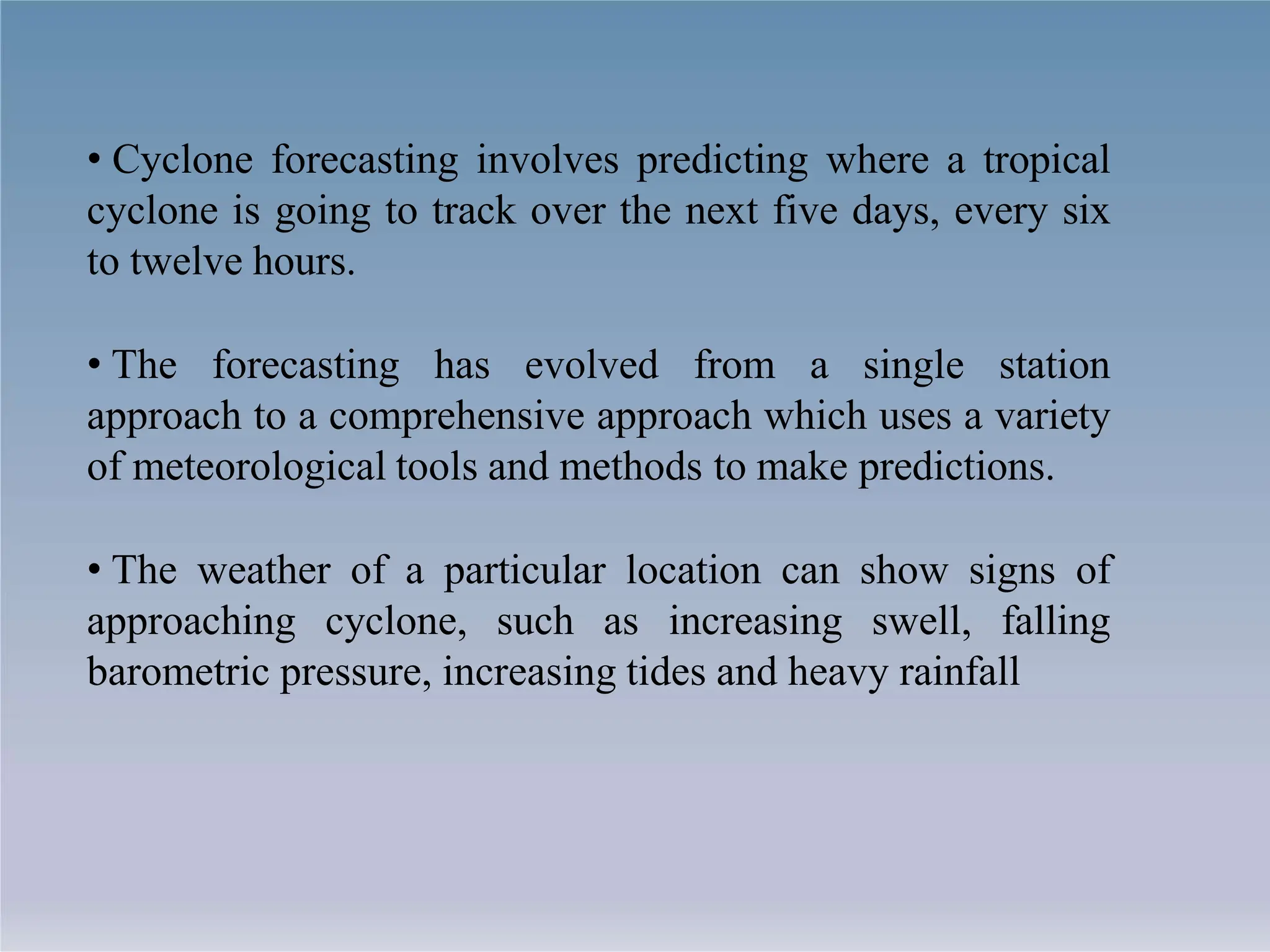The document discusses the different types of cyclones, including tropical, polar, and mesocyclones, with a focus on hurricanes and typhoons as specific types of tropical cyclones. It details their formation, categories based on wind speed, impacts such as heavy rainfall and flooding, and the management techniques for disaster response. Additionally, it explains the similarities between hurricanes, typhoons, and cyclones based on their location and warns about the benefits they could bring despite their destructive nature.


